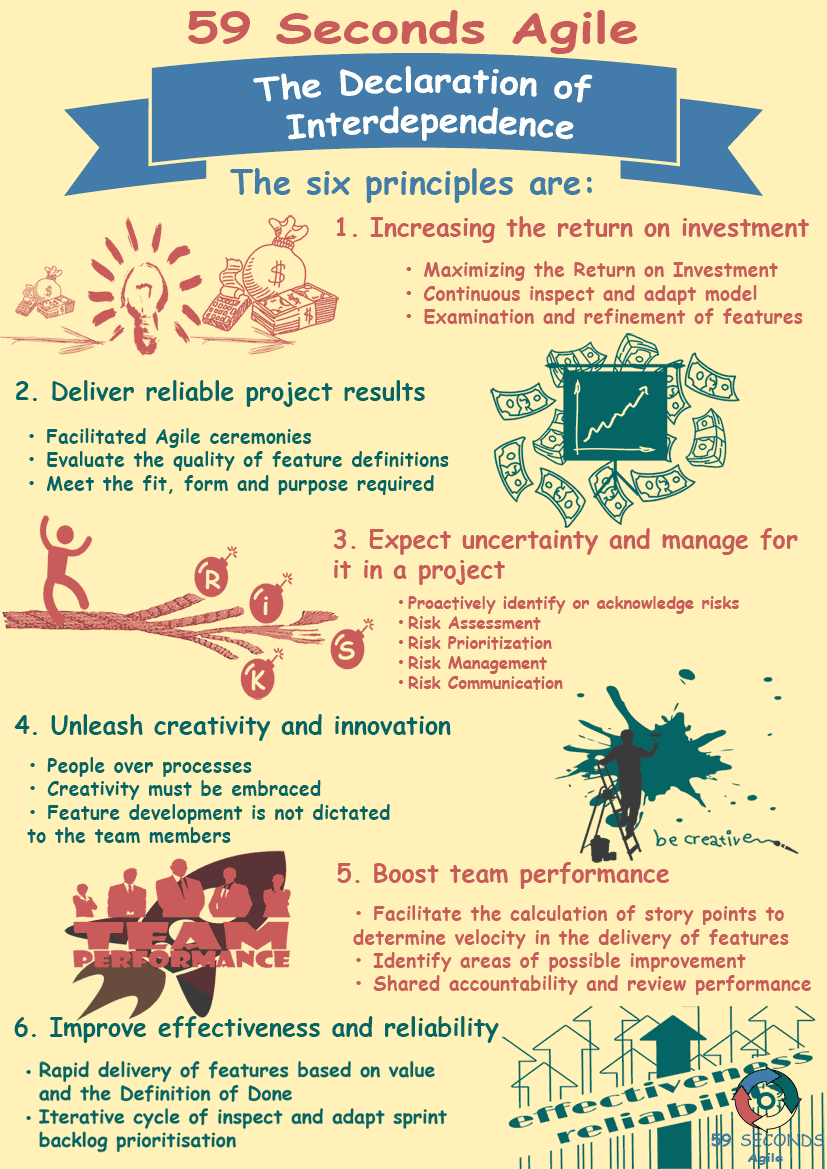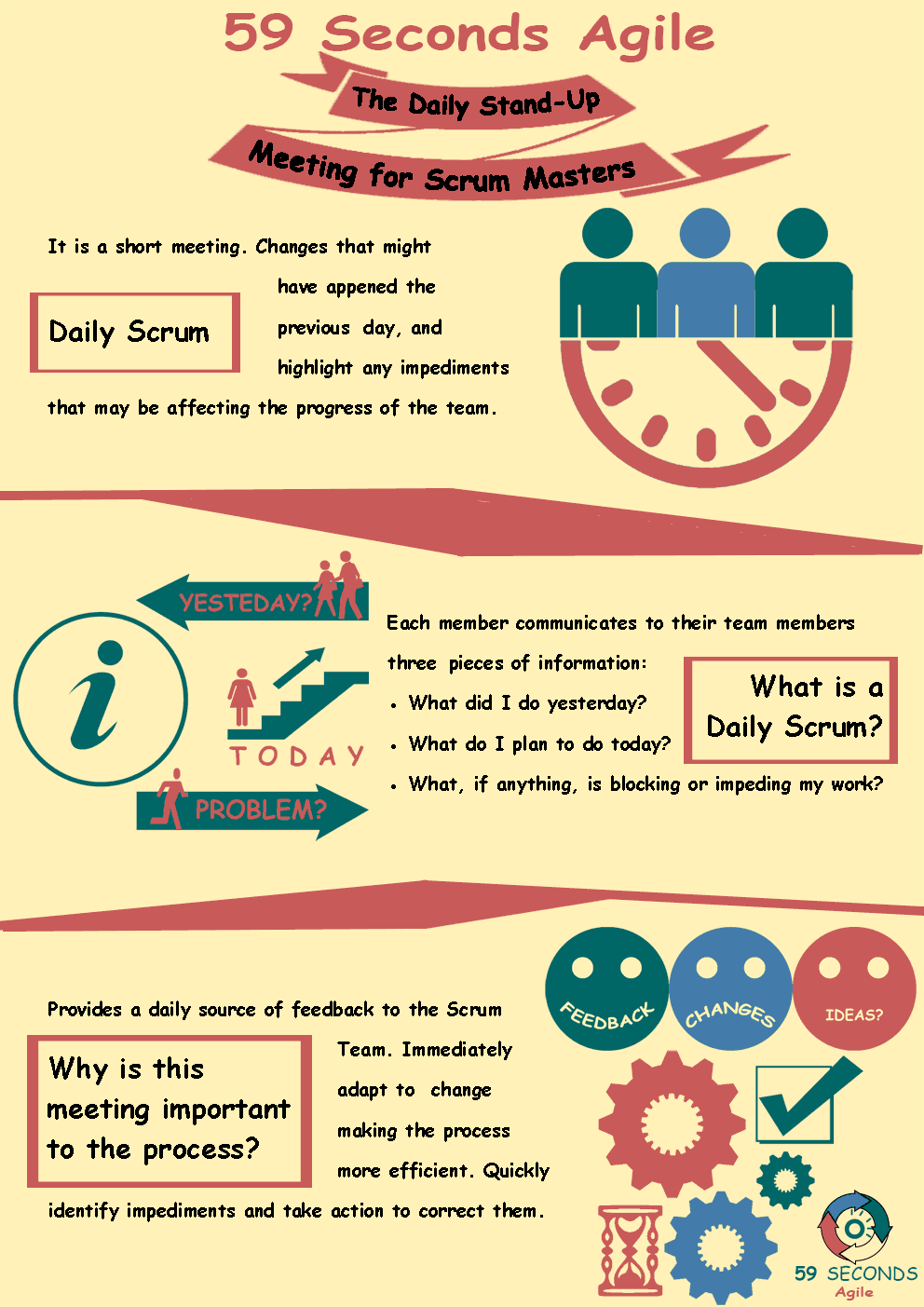What is the Declaration of Interdependence and what does it mean to the Scrum Master? This article looks to discuss what the declaration is and how it can be used to improve product delivery.

Agile Declaration Of Interdependence
A 59 Seconds Agile Video Animation
The Declaration of Interdependence for Scrum Masters
A 59 Seconds Agile Article
In 2005, a group of 15 project leaders met to the define the Agile Declaration of Interdependence. This declaration expanded upon the Agile Manifesto by establishing six management principles for complex projects.
The Declaration of Interdependence establishes that all members, stakeholders, and customers are interdependent and connected throughout the team. This declaration is designed to be a set of guidelines that provide additional process refinements.
Declaration of Interdependence: Facilitating Delivery
A scrum master’s role is to facilitate delivery with members of a scrum team to achieve the highest levels of productivity. These team members include the execution team as well as the product owner.
The scrum master removes any impediments to progress and provides guidance for ceremonies, team dynamics, Agile learning’s, product definition and holding to the product vision of stakeholders.

The Six Principles of the Declaration of Interdependence
A strong scrum master embraces the six principles of interdependence understanding that their role is one of pulling together all the components of product delivery.
The six principles are:
1. Increasing the return on investment,
2. Deliver reliable project results,
3. Expect uncertainty and manage for it in a project,
4. Unleash creativity and innovation,
5. Boost team performance and
6. Improve effectiveness and reliability.
Declaration of Interdependence: Increasing the return on investment
The first principle aligns with the scrum master’s role in maximizing the Return on Investment (ROI) by the continuous inspect and adapt model prevalent throughout Agile Scrum. This begins with the examination and refinement of features into executable user stories. Feature definition and re-definition provide an interconnected means by which to continually place the features with the highest value to an organization at the top levels of priority. The scrum master’s connectivity continues through the sprint retrospective where the project team evaluates the quality of the delivery, process improvements and has an opportunity to determine if the Definition of Done (DoD) is achieved in alignment with the ROI.
Declaration of Interdependence: Deliver reliable project results
The declaration of interdependence successfully continues with a realization that to deliver Agile Scrum projects that a scrum master will not only connect with project team members but, also with end users who are sometimes the purchasing customers. Frequent engaging provides critical input to reduce rework, technical debt, and product misunderstandings. Scrum masters who can guide the team in facilitated Agile ceremonies will encourage the product owner to utilize the insights of customers (formally and informally) to evaluate the quality of feature definitions. It is during the sprint review that the customer value is highest in determining if the feature definition meet the fit, form and required purpose.
Expect uncertainty and manage it in a project
Agile scrum embraces the fact that projects and markets will change. Scrum works to deliver the highest priority features to the market as fast as possible to take advantage of conditions that align with maximum value.
Prev <— Continue Reading —> Next
Learn More: Agile Daily Stand-Up
User Stories Applied
A 59 Seconds Agile Book Review
User Stories Applied by Mike Cohn is one of our favourite books on Agile User Stories. The book starts with an overview into user stories, and details what a user story is and the different aspects of them. He then discusses how to go about writing a user story, and provides details of the INVEST criteria that can be used to determine if the story is meeting all of its objectives. Next Mike gives an in depth discussion of who user stories are written for and where to begin when gathering the details for them. The book then discusses acceptance testing user stories, including how to go about specifying these criteria and the responsibilities of the development team and customers during this process.
Prev <— Continue Reading —> Next
The Daily Stand-Up Meeting
A 59 Seconds Agile Infographic


